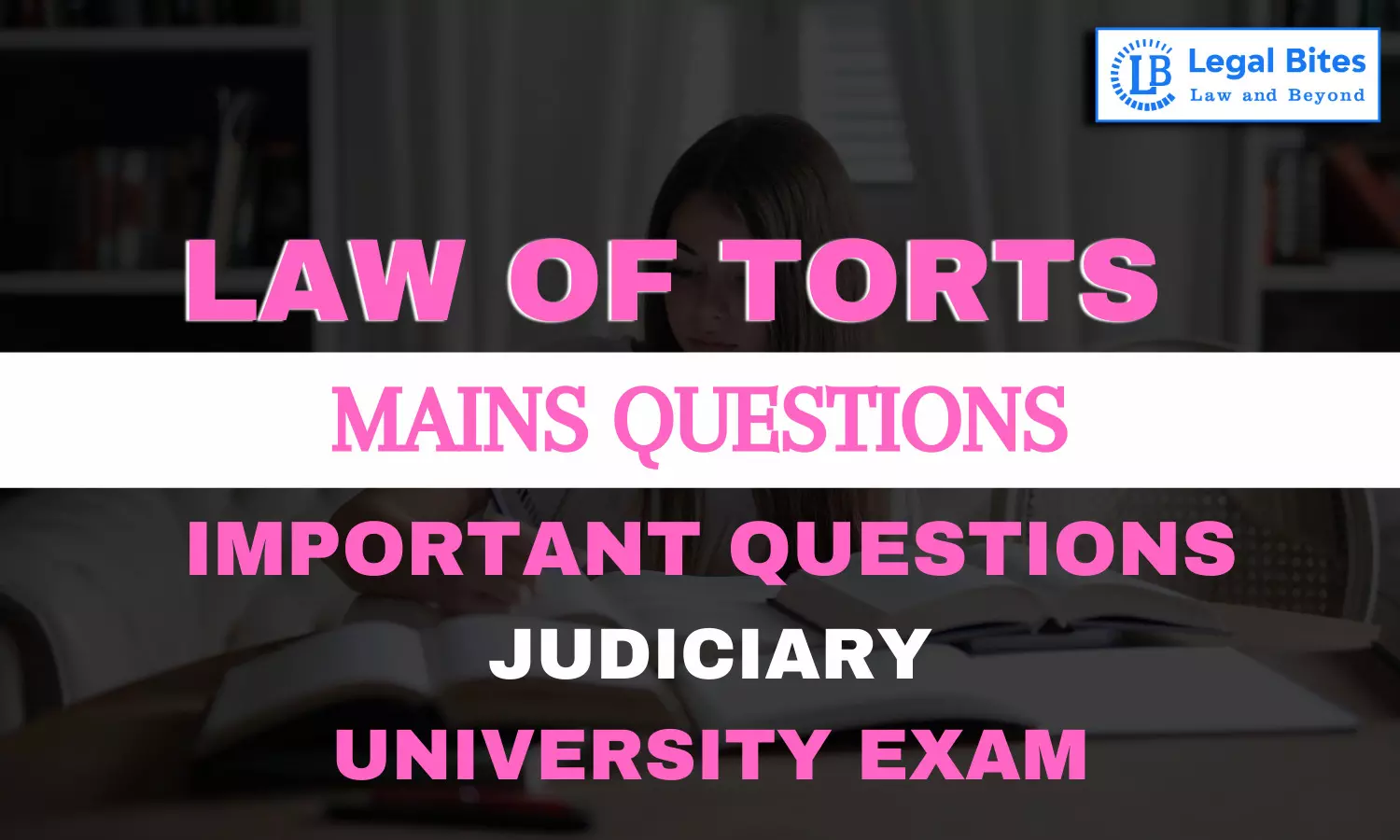Discuss the liabilities of joint tortfeasors and explain if a right mutual contribution or indemnity is available to them. Refer to the difference between English and Indian Law of the subject, if any.
Find the question and answer of Law of Torts only on Legal Bites.

Question: Discuss the liabilities of joint tortfeasors and explain if a right mutual contribution or indemnity is available to them. Refer to the difference between English and Indian Law of the subject, if any. [UPJS 1987]Find the question and answer of Law of Torts only on Legal Bites. [Discuss the liabilities of joint tortfeasors and explain if a right mutual contribution or indemnity is available to them. Refer to the difference between English and Indian Law of the subject,...
Question: Discuss the liabilities of joint tortfeasors and explain if a right mutual contribution or indemnity is available to them. Refer to the difference between English and Indian Law of the subject, if any. [UPJS 1987]
Find the question and answer of Law of Torts only on Legal Bites. [Discuss the liabilities of joint tortfeasors and explain if a right mutual contribution or indemnity is available to them. Refer to the difference between English and Indian Law of the subject, if any.]
Answer
Joint tortfeasors are two or more individuals or entities who are jointly responsible for committing a tortious act that causes harm or injury to a third party. Each joint tortfeasor is liable for the full amount of damages caused by the tort, regardless of the degree of fault or contribution to the harm. In other words, if two or more parties are found to be joint tortfeasors, they are jointly and severally liable for the entire amount of damages awarded.
In common law jurisdictions such as England and Wales, joint tortfeasors have a right to claim contributions from each other to the extent that their individual liability exceeds their proportionate share of fault. This means that if one joint tortfeasor is found to be 60% responsible for the harm caused, and the other is found to be 40% responsible, the first tortfeasor may be required to pay 60% of the damages, but may then seek to recover 40% of that amount from the second tortfeasor. This right of contribution is based on the principle that each joint tortfeasor should bear a fair share of the overall liability.
In addition to contribution, joint tortfeasors in England and Wales may also seek indemnity from each other in certain circumstances. Indemnity is a right to be fully reimbursed for the amount paid in damages or settlement, regardless of fault or contribution. However, the right to indemnity is generally limited to situations where one joint tortfeasor was acting under the direction or control of the other, or where one tortfeasor is vicariously liable for the actions of the other. For example, if a subcontractor causes damage while working on a construction project, the contractor may seek indemnity from the subcontractor if the damage was caused by the subcontractor's negligence.
In India, the principle of joint and several liability applies to joint tortfeasors, meaning that each tortfeasor is liable for the full amount of damages caused by the tort. However, unlike in England and Wales, there is no statutory right to contribution among joint tortfeasors in India. Instead, the right to contribution is based on judicial precedent and the principle of equity. Courts in India have held that joint tortfeasors may seek contribution from each other to the extent that their individual liability exceeds their proportionate share of fault, but this right is not absolute and will depend on the facts of each case.
Similarly, the right to indemnity among joint tortfeasors in India is also more limited than in England and Wales. Courts have recognized the right to indemnity in certain circumstances, such as where one tortfeasor is vicariously liable for the actions of the other, or where one tortfeasor has been forced to pay damages due to the fraud or wrongdoing of the other. However, the right to indemnity is not as well established in India as it is in England and Wales.
In conclusion, joint tortfeasors are jointly and severally liable for the full amount of damages caused by a tortious act, regardless of the degree of fault or contribution. In England and Wales, joint tortfeasors have a right to claim contributions from each other to the extent that their individual liability exceeds their proportionate share of fault, and may also seek indemnity in certain circumstances. In India, the right to contribution and indemnity among joint tortfeasors is more limited and will depend on the specific facts of each case.

Mayank Shekhar
Mayank is an alumnus of the prestigious Faculty of Law, Delhi University. Under his leadership, Legal Bites has been researching and developing resources through blogging, educational resources, competitions, and seminars.
